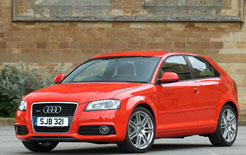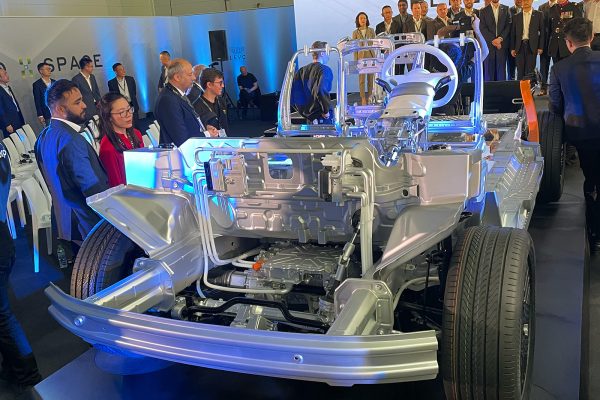
Audi A3: Sanjay runs one of these, financed through a PCP
Business Car Manager: Editor’s Blog
I MET up with a couple of old mates of mine from the business last week, Sanjay Mistry and Simon Wells.
Both Sanjay (@PublicRelations) and Simon (PaperchasePR) are both in the PR game running their own businesses. We met to catch up and gas about the industry – which is of no real interest to you I realise.
What did strike me as interesting though – and one of the things that I celebrate about small businesses and their approach to business cars – is the sheer diversity. And it’s something worth talking about here – because bigger organisations don’t often understand this. And, as we’ll see later, HMRC – surprisingly – does.
Many small businesses are ‘lifestyle’ firms – the earnings generated from the business support the owner’s lifestyle, the car fitting in alongside: a dual role of family car and business car.
Sanjay runs an Audi A3 1.9 TDI. He has this on a PCP over three years/30,000 miles and as he is a sole trader, sticks it all through his business.
Simon, too, is a sole trader. He runs a MINI Cooper, which he bought six months old with part cash and part bank loan. Like Sanjay, the business car expenses are put through his profit and loss account.
If you haven’t read our Ask the Experts piece on accounting for business cars as a sole trader – What’s the maximum business car write down value for the self-employed? – then I suggest you do. It’s very good, and very enlightening.
Simon’s wife also runs her own business called Kidstaff. There the staff use their own private cars on business and use AMAP reimbursements of 40p per mile to cover this business mileage.
The company makes driving licence checks, insurance checks and also encourages public transport where possible. But, at times, there’s no other possibility than the private car on business.
Again, a different approach and one which works for that business.
So, amongst all this brilliant diversity which I celebrate, you do tend to get bigger industry representatives in the business car field banging the drum for us all to be in company cars. And that AMAPs are too generous.
It’s an area guaranteed to get me going. They don’t understand that actually many of these approaches work perfectly well for small businesses and traders.
Take John Lewis, the chief executive of the BVRLA, the industry body which represents the leasing companies. He has consistently campaigned for a lowering of the AMAP rate.
“Together with the Office of Government Commerce, we have done a lot of work to try and make organisations aware that inflated AMAP rates are damaging their environmental and road safety credentials,” John has commented on the subject in the past.
Now, I know where John is coming from on this – the ludicrously inflated pence per mile running costs that are paid to public sector workers. These are often 50p or 60p per mile. All that does is encourage additional mileage. But, and this is the but, lowering the pence per mile were government to act upon it, would have a detrimental effect on small businesses. So please don’t tar us all with the same brush, John.
In many ways, HMRC understands the issue perfectly well I feel. HMRC introduced the 40p per mile rate back in 2002. That’s eight years ago. It hasn’t shifted its position. Yet the cost of fuel has risen dramatically. It seems to me that HMRC is using inflation to push smaller businesses into running more economical business cars simply by leaving the bar where it is. It’s easy for small businesses to administer – see our case study on Mark Tait of MAT Systems – and both small businesses and their accountants understand it.
It’s the system I use for my Audi A6 TDIe.
As with any business car advice, though, whether you are running private cars on business, cars through your sole trader enterprise, or company cars through your limited company, the key thing is this: keep the emissions low, choose fuel efficient cars, and you’ll benefit from lower expenditure, whether it’s running costs or tax.
Both Sanjay and Simon drive prestige business cars that fit into that definition well. And so does my Audi A6.






